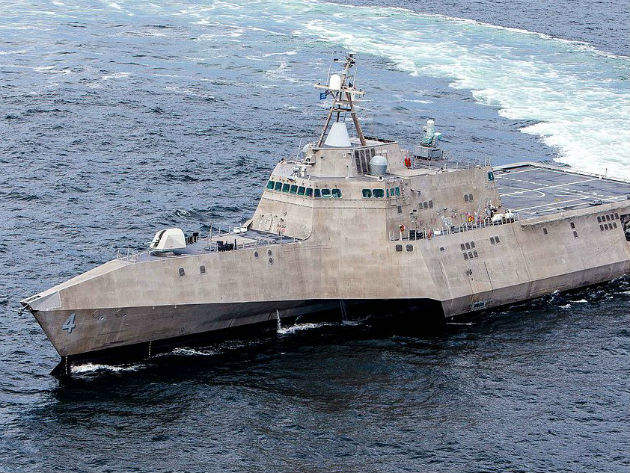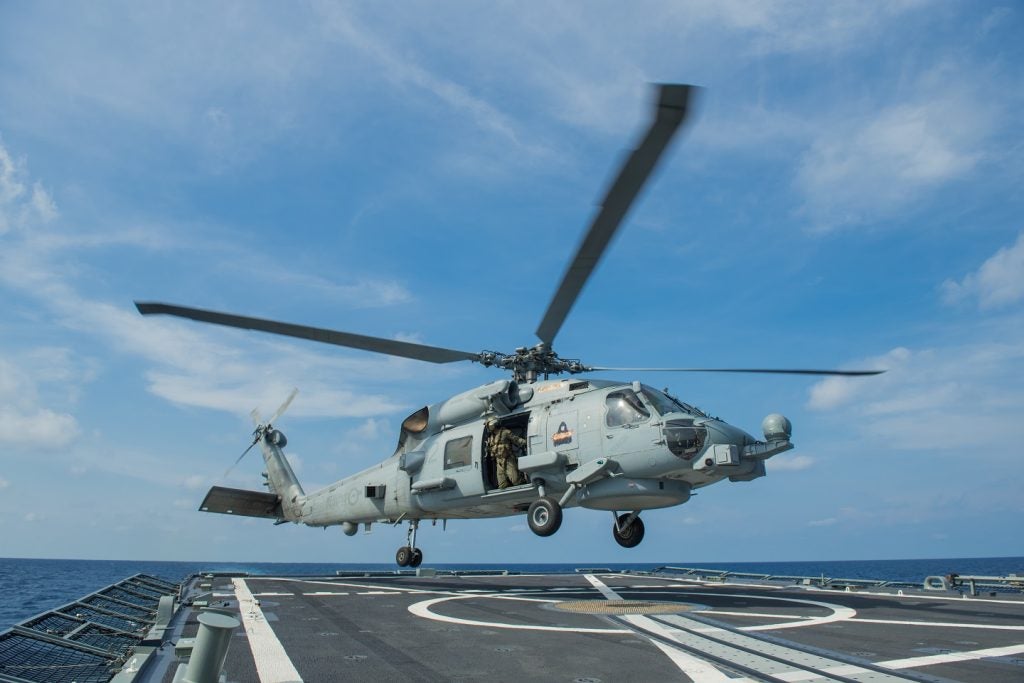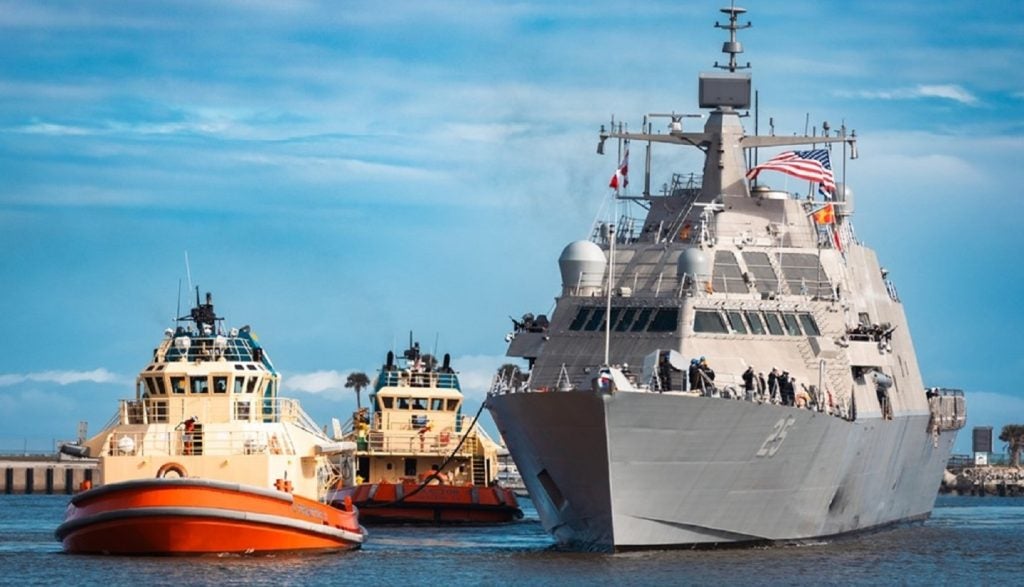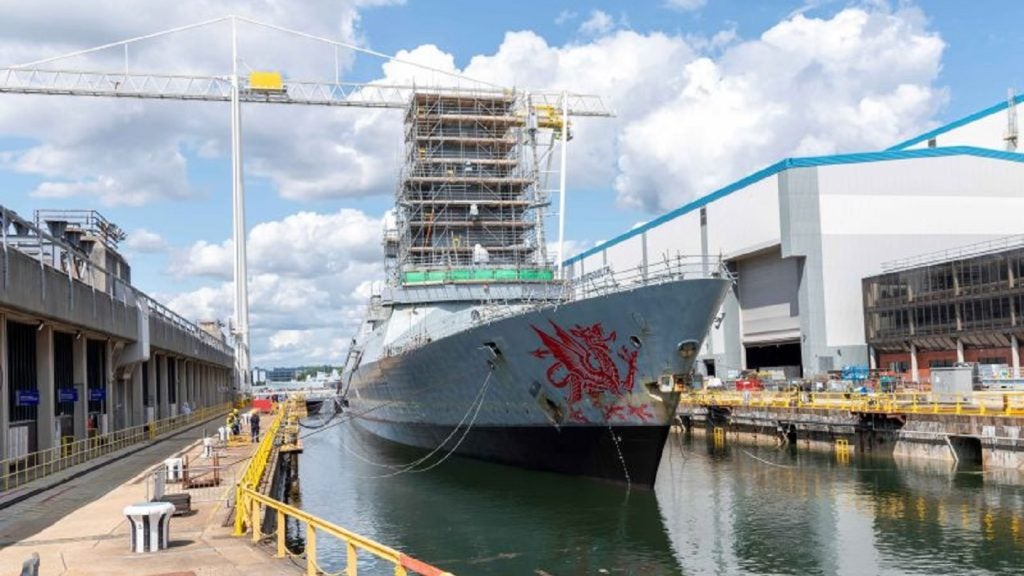

Even before this latest incident, it had been a tough twelve months for the LCS, with USS Fort Worth sidelined for over half the year in Singapore, USS Milwaukee left without power and under tow, USS Freedom in need of serious engine repairs and USS Coronado forced to turn back from its planned Pacific deployment in August.
The Montgomery’s woes follow hard on the heels of the US Navy’s decision to put in place an engineering stand-down and review of LCS squadrons, re-train its engineering crews, and begin a major overhaul of the LCS force employment strategy. Set to be implemented over the next five years, and affect all 28 LCS budgeted and ordered through 2018, this will usher in some important changes which, according to the navy, will simplify crewing, stabilize testing and increase overseas deployment presence availability.
The initiative includes turning the first four ships – two Independence-class vessels from Austal USA and two Lockheed Martin/Marinette Marine Freedom-class vessels – into non-deploying test ships, to allow rigorous near and long-term testing of both classes to be undertaken without disruption to operational schedules. Of these four ships – the Independence, the Coronado, the Freedom and the Fort Worth – only the Independence has escaped serious engine issues over the past year
A catalogue of failures
The story so far has been a sorry catalogue of faults and failures.
See Also:
USS Freedom sustained major engine damage when a malfunctioning seal let seawater seep in, the Milwaukee broke down in transit after a clutch failed to disengage when the ship switched gears and the Coronado sustained damage to one of its flexible coupling assemblies just two months into its maiden deployment. While the reasons for that have not yet been made clear, incorrectly applied lubrication oil on the ship’s combining gears has officially been blamed for the Fort Worth’s eight-month stay for repairs.
How well do you really know your competitors?
Access the most comprehensive Company Profiles on the market, powered by GlobalData. Save hours of research. Gain competitive edge.

Thank you!
Your download email will arrive shortly
Not ready to buy yet? Download a free sample
We are confident about the unique quality of our Company Profiles. However, we want you to make the most beneficial decision for your business, so we offer a free sample that you can download by submitting the below form
By GlobalDataThe latest engineering casualty, USS Montgomery, is reported to have suffered not one, but two unrelated problems on the same day – first a seawater leak was detected in the hydraulic cooling system and then a fault developed in one of the gas turbine engines. It led to the loss of both port shafts, necessitating her to put in for repairs.
But how did things go so wrong – and what can the navy do about it?
The search for design faults
The navy is being understandably slow to make too many pronouncements until more is known for certain, but there has been no shortage of speculation from experts and armchair admirals alike, and a lot of the focus has fallen on the architecture of the propulsion system. It has been criticised for being overly complex and hard to maintain, especially given the little ship-board real estate it has been allocated, the size it has to be to generate the required speed and the relatively small crew. In particular, there have been suggestions that the use of a combined diesel and gas (CODAG) propulsion system lies at the bottom of the many problems being experienced.
While CODAG power plants are undeniably more complex than an individual stand-alone of either, and their use is not common within the US Navy, they are hardly particularly unusual or novel. The combination of a diesel for fuel efficient, low-speed standard cruising and a gas turbine for high-speed bursts is a well established method of gaining a top speed for a vessel that considerably exceeds its cruising speed. CODAG systems drive many modern corvettes and frigates, and they successfully feature on the US Coast Guard's Legend-class cutters.
However, they do require quite complicated coupling arrangements, since in most cases the power differential between diesel-only and diesel-plus-turbine operation is too high for conventional systems to cope and so to accommodate this, multi-speed gearboxes are used to change the transmission ratio.
Although the engineering casualty suffered by the Milwaukee seems rooted in this aspect of the design, it is important to remember that there are significant differences between the propulsion systems of the the two LCS classes. Freedom-class vessels have independent port and starboard drive lines, with each having its own diesel and turbine, acting through a combining gear box, a drive shaft and finally a de-combining gearbox, to allow power to be routed to one or both water jets. In the Independence-class, however, each of the two diesels and two turbines is coupled to its own water jet. While the loss of both port diesel and port turbine shafts admittedly led to the Montgomery’s recent problems, it seems reasonable to expect that in the long run, the relative simplicity of the system should make this class as a whole the more reliable of the two – at least in terms of its engineering.
Managing the burden on LCS crews
From the outset, the new LCS were intended to be a radical departure from conventional warships, being smaller, much faster and more versatile. If the need for speed drove some interesting choices in the propulsion system, the desire to go to sea with little more than half the crew of other similarly sized vessels has almost certainly made the engineers’ job more difficult, even after the navy increased core numbers by 25%.
It seems that although the propulsion design is not of itself flawed, it is not an easy system to support, and particularly not afloat. If the ship was only required to match the 30-knot sprint speed of a destroyer, it could use a much smaller gas turbine; to be able to make the required 40 or 45 knots leaves it saddled with a bigger engine, and its already hard pressed crew facing greater operational and maintenance demands to keep it running smoothly.
With at least one, and possibly more, of the recent problems attributable to human error, the retraining initiative already ordered for engineers is not the only move being implemented to reduce the burden LCS crews carry.
One of the biggest changes will be the phasing in of a two-crew “blue/gold” model like the one in use on ballistic missile submarines and minesweepers, to replace the current LCS arrangement of three rotating crews operating two ships. The new two-crew-per-ship model will mean that one crew can undergo homeport training while the other deploys, but perhaps more importantly, the hope is that it will also simplify the ownership of maintenance responsibilities and help avoid further engineering mishaps in the future.
Too little, too late?
However, are all these measures coming too late?
In September, even as the stand-down, re-training and reviews were starting to take effect, the Senate Armed Services Committee (SASC) was calling for an LCS replacement design to be prepared without delay. A letter signed by committee chairman and long-time LCS critic John McCain and ranking member Jack Reed reportedly urged the navy to “start planning now to procure and begin deliveries of a new, small, surface combatant as soon as possible in the 2020s.”
While the navy evidently remains committed to the LCS, and still holds on to its intended acquisition numbers, which would eventually see a total fleet of 52, it badly needs to put an end to these engineering problems, or the calls to replace it will simply continue to rise.







